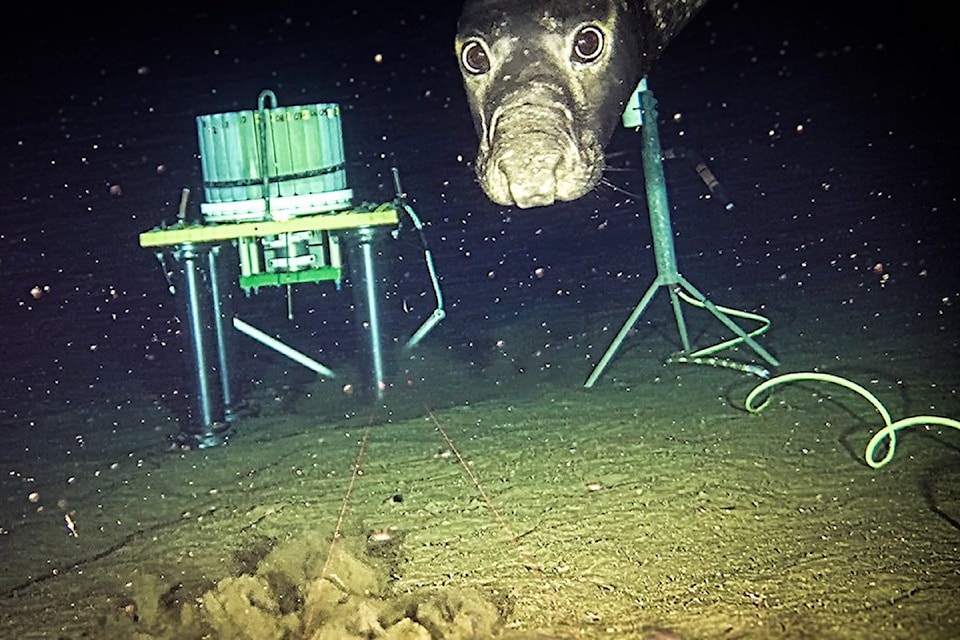In what's being hailed as a first, an ocean monitoring agency's deep-sea observatory captured several visuals of northern elephant seals foraging hundreds of metres below the surface off Vancouver Island.
A paper published on Wednesday was the result of University of Victoria (UVic) and Barcelona researchers recording the surprise visitors, but their findings weren't exactly intentional.
The researchers were studying the effect of light and bait on fish and invertebrate behaviour at Barkley Canyon, which falls along the UVic-hosted Ocean Networks Canada's (ONC) Neptune observatory. That monitoring infrastructure relays data in real-time and consists of hundreds of kilometres of fibre optic cable running along the ocean floor off B.C.'s coast.
At least eight male elephant seals between the ages of four and seven were caught on camera or detected by hydrophones multiple times as they dove to the 645-metre-deep site at Barkley Canyon in 2022 and 2023.
Researchers say the work provides the first glimpse into the deep-sea behaviour of the elusive seal species. It also provides insight into their feeding strategies, prey preferences and resting habits.
"We suspect the seals have learned to associate sonar noise from the research instrument with the presence of food – a phenomenon known as the 'dinner bell' effect," the paper's lead author Heloise Frouin-Mouy, a visiting scientist at UVic's biology department, said in a news release.
"The seals appeared to use this sound to locate an area with prey and take advantage of fish disturbed by the camera lights, particularly targeting sablefish, their preferred meal as seen in the video footage.”
Four of the seals repeatedly visiting the Barkley Canyon research site over a 10-day stretch also shows the marine mammals quickly learned to use the equipment to forage for food, Frouin-Mouy said.
“We became familiar with the mammals and ended up naming them in the paper after members of The Beach Boys to differentiate between the frequency of visits and observed habits,” said the researcher, who is also a scientist at the University of Miami.
The researchers used the NEPTUNE monitoring equipment to observe the seals, which can range between Alaska and Mexico, for about a year.
The adolescent seals would ignore more than a dozen other stationary and drifting prey options as they mainly went after sablefish that were swimming around the deep-ocean site. The researchers also recorded the mammals bobbing their heads and producing low-frequency sounds while chasing prey, UVic said.
Videos also showed the animals "power napping" on the seafloor at Barkley Canyon, which researchers called another new and never-before-seen behaviour from the male northern seals of that age.
UVic's Francis Juanes, a biology professor, and adjunct professor Rodney Rountree also collaborated on the research. Jacopo Aguzzi of the Barcelona-based Instituto de Ciencias and Ocean Networks Canada's Fabio De Leo Cabrera joined them as co-authors on the paper.

